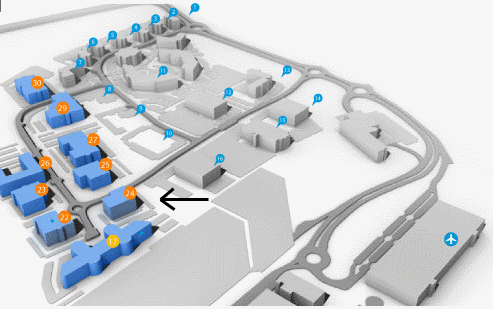Current Size: 100%

- Data & statistics
- Survival Statistics
Survival Statistics
About our survival data
This page contains the information on the net survival spreadsheet. Click here to download the spreadsheet.
Use drop-down filters to select estimates of 5-year net survival for Irish cancer patients (malignant cancers only based on ICD-O-3 rules) by cancer type, age and stage. Figures are shown for the most common cancers, based on the first invasive/malignant cancer diagnosed in adult patients (age 15-99) during the periods 1994-1998, 1999-2003, 2004-2008, 2009-2013, 2014-2018.
Net survival represents the probability of a patient surviving a given time (from date of diagnosis to date of death/ censor date) in the hypothetical situation in which the disease of interest is the only possible cause of death.
Five-year net survival is a commonly quoted metric by population-based cancer registries [1] which allows comparisons across different time periods and countries. Calculation of net survival does not require cause-of-death information which is not always certain in deaths certificates. Net survival is the expected survival in the hypothetical situation in which cancer is the only possible cause of death [2], i.e., adjusted for other causes of death using a lifetable for the population of interest [3]. It is based on observed survival of cancer patients scaled against the expected survival of persons of the same age and sex in the general population.
For cancer patients, it measures the effect of the excess mortality associated with a cancer diagnosis. Five-year net survival estimates are commonly presented. For example, if average five-year net survival for patients with a particular cancer subset is 80%, on average 20 out of 100 patients die within five years who would not otherwise have died, based on our knowledge of 'background' mortality rates among populations of the same age and sex.
Survival estimates for Irish patients were derived by matching of registered cancer cases against death certificates for all deaths in Ireland up the end of 2021 and comparison against a life table showing expected probabilities of survival for the general population. Calculations use the ‘strs’ command with ‘Pohar’ option [4] in Stata and estimates have been constrained so that net survival does not exceed 100% in any follow-up interval [2]. Please interpret survival figures with caution - confidence intervals (a measure of statistical uncertainty) are wide (and sometimes not calculable) for rarer cancers and for some age/stage subsets where case numbers are very low.
Survival by year
For any cancer subset and period of interest, calculating net-survival requires adequate follow-up time. Survival is presented by years of diagnosis (1994-1999, 1999-2003, 2004-2008, 2009-2013, 2014-2018). 5-year net survival for the period 2019-2023 will be presented in a future update when adequate follow-up time has accrued for cases diagnosed during this recent period.
Survival by sex
5-year net survival estimates for males, females and M&F combined are provided.
Stage-specific survival
Survival is presented by AJCC/UICC 7th edition TNM stage for the period 2014-2018.
Age-specific survival
5-year net survival is presented for the standard age-groups (usually 15-44, 45-54, 55-64, 65-74, 75-99 and 15-54, 55-64, 65-74, 75-84, 85-99 for prostate cancer) used by EUROCARE and other projects for the purpose of age-standardization for international comparison of survival [5].
Age-standardised survival
Where selected in the spreadsheet, age-standardised survival estimates are presented, i.e. survival for all ages 15-99 (15-64 for testicular cancer, 20-99 for bone cancer) was standardised to recommended population age weights [6]. The age-groups used differ for prostate cancer, and greater weighting is given to younger patients for some cancers (melanoma, bone, cervix, testis, brain, and thyroid), reflecting difference in typical age at diagnosis for these cancers. Survival estimates for paediatric cases were published separately by the NCRI in 2023 [7]. We also present 5-year net survival by age and stage at diagnosis for the most common cancers diagnosed during 2014-2018.
Exclusions from survival analyses
Patients aged <15 or >99 at diagnosis; death-certificate-only (DCO) and autopsy-only cases; second or subsequent malignancies in the same patient (e.g. if a patient had lung cancer followed by breast cancer sometime later, this patient would be excluded from the breast cancer subset); in situ carcinomas, benign tumours and tumours of uncertain behaviour are excluded.
Note
Not all cancer type/age/stage subsets are shown in this spreadsheet. For some rare cancers, or for some age/stage/period subsets case numbers may be too low to reliably calculate net-survival and other survival methods may be more appropriate. Please contact the NCRI at ncr_info [at] ncri.ie if you would like to submit an enquiry about a cancer type of interest.
References
[1] C. M. L. Nagamine, B. N. G. de Goulart, and P. K. Ziegelmann, ‘Net Survival in Survival Analyses for Patients with Cancer: A Scoping Review’, Cancers (Basel), vol. 14, no. 14, p. 3304, Jul. 2022, doi: 10.3390/cancers14143304.
[2] P. W. Dickman and E. Coviello, ‘Estimating and modeling relative survival’, Stata Journal, vol. 15, no. 1, pp. 186–215, 2015.
[3] D. Spika et al., ‘Life tables for global surveillance of cancer survival (the CONCORD programme): data sources and methods’, BMC Cancer, vol. 17, no. 1, p. 159, Feb. 2017, doi: 10.1186/s12885-017-3117-8.
[4] M. P. Perme, J. Stare, and J. Estève, ‘On estimation in relative survival’, Biometrics, vol. 68, no. 1, pp. 113–120, Mar. 2012, doi: 10.1111/j.1541-0420.2011.01640.x.
[5] R. De Angelis et al., ‘Cancer survival in Europe 1999-2007 by country and age: results of EUROCARE--5-a population-based study’, Lancet Oncol., vol. 15, no. 1, pp. 23–34, Jan. 2014, doi: 10.1016/S1470-2045(13)70546-1.
[6] I. Corazziari, M. Quinn, and R. Capocaccia, ‘Standard cancer patient population for age standardising survival ratios’, Eur. J. Cancer, vol. 40, no. 15, pp. 2307–2316, Oct. 2004, doi: 10.1016/j.ejca.2004.07.002.
[7] ‘Childhood, adolescent and young adult cancer. A. Brennan, PM. Walsh. NCRI, 2023’. National Cancer Registry Ireland, 2023. [Online]. Available: www.ncri.ie
Building 6800
Cork Airport Business Park
Kinsale Road, Cork T12 CDF7
Email Contact us here
Tel: +353 (0) 21 4318014
Fax: +353 (0) 21 4318016




